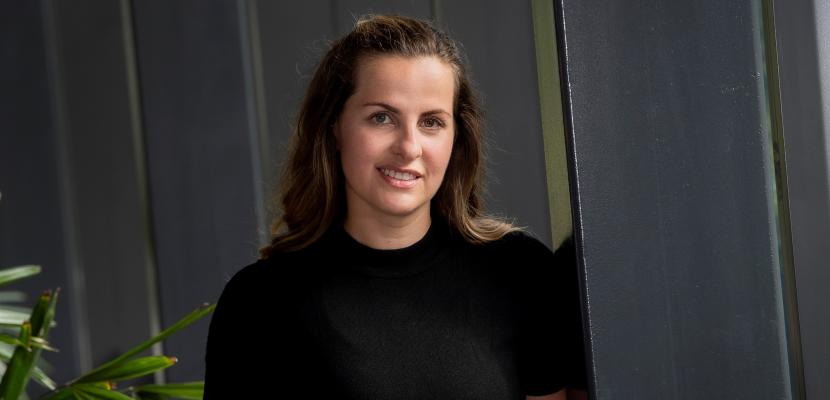
Nicolene (Nikki) Lottering is an Assistant Professor in Medicine at Bond’s Faculty of Health Sciences & Medicine.
It was a burning curiosity that sent Alice down the rabbit hole in Lewis Carroll’s classic children’s story, leading her into a fanciful world which forced her to imagine, discover and explore in her quest to find home.
With the 2022 National Science Week theme being ‘glass’, I reflected on the many parallels of my career with Carroll’s famous tale, where the act of going down the rabbit hole is a metaphor for exploring the new and unknown. The adventures I’ve embarked on as a scientist have been unexpected and unplanned, but fascinating and fun. And they are adventures I want to see more girls and young women having.
But when it comes to women in STEM - Science, Technology, Engineering and Maths – we still have a long way to go. The Australian Government’s STEM Equity Monitor 2021 paints a telling picture of the barriers keeping women out of STEM fields.
It found fathers (51%) are more likely than mothers (38%) to talk to their children about STEM topics and that parents of boys were more likely than those of girls to have these conversations. Half of all parents said it was easier to engage boys in STEM compared to girls and teachers agreed that boys were more confident in STEM topics than girls.
On top of that, women who complete a STEM qualification earn consistently less than their male counterparts and are penalised financially for career breaks including having children. And in a final blow, a recent study showed that STEM fields with high numbers of women are more likely to be considered ‘soft’ sciences than those with a higher proportion of men.
And we know this gender-talent stereotype starts early. A study in the journal Science Advances, looking at data from 500,000 students participating in the 2018 Programme for International Student Assessment (2018), found that when asked about the concept of brilliance – who can be brilliant at maths or science – girls didn’t think they could be ‘brilliant’ in specific fields. Boys responded completely differently, jumping into tasks and if they failed or went wrong attributing that to outside factors, not themselves. Girls, on the other hand, tended to not even try because they believed they weren’t good enough. The research suggests that from the age of six, girls are less likely to identify ‘smart’ attributes or the concept of brilliance with members of their own gender. But at the age of four, this gender disparity doesn’t exist. This tells us something happens between the ages of four and six to change girls’ thinking and self-confidence.
It's worrying that this intrinsic fear of failure, this sense they can’t be brilliant at STEM, is appearing so early in girls, even before they start their primary school journey. This is where the visibility and impact of role models is more important than ever. We need better representation of women in STEM in schools, in the media and in organisations – it’s critical that girls see and hear the stories of women pursuing these fields of ‘brilliance’. We need to make explicit connections between being ‘smart’ and ‘brilliant’ and the ability to be successful in that field. This will highlight to young women the multitude of career pathways possible in STEM. This is why I’m passionate about working with young children, especially girls, to help them develop a love of and confidence in STEM subjects. One of the best ways to do this is through encouraging imagination, storytelling and play-based learning.
Boys and girls hear very different stories about when they are engaging with STEM content, and this comes down to the context of learning. It’s these stories, often unintended, that can shape that fear of failure in girls – less often is their attention drawn to the scientific, mathematical, or engineering elements of the everyday tasks they’re undertaking, the games they are playing or the hobbies they’re passionate about. Wouldn’t it be fun to link learning of chemical reactions to creating a make-up product, or when cooking your next HelloFresh meal at dinner time? Making those connections early on is one of the ways we can show young women they are already embracing STEM in their everyday lives and shine a light on how those skills and passions can become exciting and fulfilling careers.
For me, I never expected a passion for public speaking and debating in high school to spark a lifelong love affair with bones, but it’s the reason I earned a scholarship to study forensic science and became inspired by the stories our bodies can tell even long after death. Reflecting now, representation of scientists was a contributing factor that unconsciously informed my undergraduate pursuit. When we think of forensic scientists in modern media, we think of Temperance Brennan in Bones, or Abby Scuito in NCIS; which is fairly accurate of the gender representation in Forensic Anthropology. It’s a great example of ‘if you can see it you can be it’ in practice.
As Albert Einstein once said, ‘play is the highest form of research’. It’s a reminder that the world is a laboratory to the inquiring mind. STEM is all around us, every day, but if we want to see more women in these fields, we need to get better at pointing out where to look.

